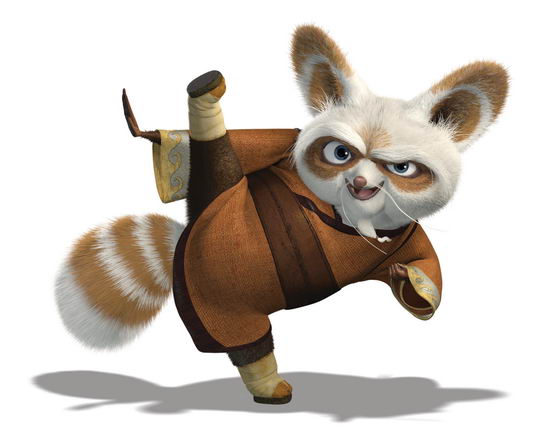This post is part of a series on Defense Mechanisms for Mental Health Awareness Week 2016. To know more, read the introduction to the series here.
This post is about Master Shifu, the Kung Fu Master from the Kung Fu Panda series of movies. Shifu’s character shows dualities beautifully; he is very strict and disciplined, yet soft at heart, he is angry and frustrated at some points, yet able to care and feel at peace at other points. Po, the protagonist panda in the movie thinks of Shifu as the ‘least Zen Zen Master’ ! These dualities make him one of my favourite characters from the Kung Fu Panda series, and here is an attempt to understand Shifu and the various defense mechanisms that he uses.
The Defense Mechanism of Denial
Shifu had trained the Furious Five in Kung Fu, a dragon warrior was to be chosen from among them by Oogway (Shifu’s Master) to safeguard and bring peace to the valley. Suddenly Po (the Panda) appeared amidst the furious five, and he was chosen as the dragon warrior, in what seemed like a mistake to Shifu.
Shifu was unable to accept Po as the Dragon Warrior, he felt outraged, and used Denial as a defense mechanism.
Denial is the refusal to accept reality or fact, acting as if a painful event, thought or feeling did not exist. Many of us use denial in our everyday lives to avoid dealing with painful feelings or areas of our life we don’t wish to admit.
Shifu put in all efforts to prove that Po was not the real dragon warrior. He refused to accept the reality and kept calling it an accident. Oogway told Shifu “there are no accidents”, and told him that he suffered from the “illusion of control”, where he wanted everything to run perfectly as per the plan, and when Po was chosen rather abruptly, he was finding it difficult to accept that.
It seems that Shifu had used Denial as a defense mechanism even earlier. He had adopted Tai Lung (a leopard cub), loved him liked he loved no one else, and trained him in Kung Fu; but Tai Lung turned evil. He loved and took a lot of pride in Tai Lung’s achievements, and it was painful for him to accept that something could be wrong with Tai Lung. In Shifu’s own words to Tai Lung later “It was my pride that blinded me to see what you are becoming, what I was turning you into”.
The Defense Mechanism of Acting Out
Acting out is when we perform an extreme behavior, or show some psychosomatic symptom instead of getting in touch with our true feelings, instead of acknowledging to ourselves and putting into words what we really feel and experience inside ourselves. Instead of saying, “I’m angry with you,” a person who acts out may instead throw a book at another person, or punch a hole through a wall.
Shifu also used Acting out as a defense mechanism.
Shifu initially wanted Po to quit as the dragon warrior. He was very angry, and acted out by putting Po through many punishing ‘exercises’, believing that he would quit when injured terribly. He used sharp verbal barbs against Po, and purposely put him through extremely strenuous Kung Fu tests, for which he wasn’t trained.
When Shifu Confronts His Defenses
At a later point in time, Shifu was able to confess to Po that he had felt angry, and that he had wanted him to quit. He was able to accept Po as his student and trained him very efficiently. He was also able to apologise to Tai Lung for being blinded (in denial) to what he was turning into. It seemed that Shifu was able to feel at peace upon confronting his greatest mistakes.
In Shifu’s own words to Po “Once I realized that the problem was not you, that it was within me, I found inner peace”. He was thus able to move from denial and acting out to expressing his anger, to acceptance, and then to inner peace.
Have there been times when it was hard for you to accept reality and so, you used Denial? In what ways did that help and in what ways did it not? Also, what are some of the stereotypical ways in which you’re likely to engage in acting out when faced with difficult feelings? (slamming the door, hanging up the phone, an angry outburst etc.)
Post Contributed by: Megha Tulsiyan
Image Credit: DreamWorks Animation (This image is used under the Fair Use Policy, as it is part of a free, online blog and is not being used to sell any product or service.)


Too good Kunjal…beautifully put….lots of hard work…hoping to catch up on other articles as well…congratulations sadia, kunjal n the inner space team…keep up the good work!!!